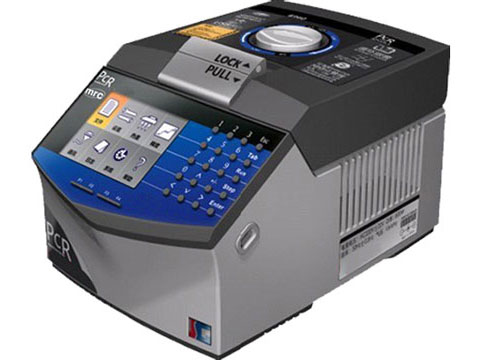Pcr thermal cyclers main features:
- High heating /cooling rate (heating/cooling rate ≥2.5℃/sec)
- Reliable and stable operation, due to the thermoelectric module manufactured via the ITI’s thermoelectric cooling technique.
- Automatic temperature ramp control, which allows different heating/cooling ramp settings.
- The soak mode at a temperature up to 4℃ after normal cycling program execution.
- Instant inspection of total execution time and remaining execution time.
- Heated lid, preventing the sample in a centrifugal tube from evaporation, which makes paraffin oil unnecessary.
- Auto-restart in case of power failure, restoring the data before interrupting and continuing to perform the previously interrupted program.
- are used in applications such as quantitative gene expression analysis,drug target validation,genotyping, and SNP analysis
- the block have change temperature at specific times, and spend specific durations of time at specific temperatures.
- The real-time PCR method, which enables real-time monitoring of the rate of DNA culture, means that the rate of gene expression can be learned.
What to consider when buying pcr thermal cyclers?
Before purchasing thermal cyclers you need to understand what your use of the device is, Some samples, volume and interchangeable blocks.There are a variety of thermal cyclers options like Real Time PCR. First you need to know what you need and then find the right model

A Complete Guide For Thermal Cyclers
Thermal cyclers are used in a PCR reaction to amplify DNA. This technology uses heat to cause the DNA strands to separate and then cool down the sample so that new copies of the strands can be formed from the separated strands. The thermal cycler monitors and controls temperatures during these process steps.
A good thermal cycler is not only precise but also highly accurate. It should be able to maintain specific temperatures for the various steps of a PCR reaction and quickly ramp up or down to these temperatures.
Working Process
A thermal cycler creates a temperature-controlled environment to help with PCR samples. A DNA sample is loaded into the thermal cycler to begin the reaction. Depending on the thermal cycler you are using, this may involve either loading in tubes filled with liquid PCR mix or pipetting samples directly onto an optical glass surface.
Once the samples have been loaded, they are placed inside the heated block of the thermal cycler. Here, the sample is heated to a specific temperature for a set period. The heating and cooling are controlled by an internal computer that monitors and adjusts temperatures.
After these steps have been completed, the process continues as the samples are loaded onto a detection surface and analyzed using fluorescent dyes or DNA sequencing techniques. The results are then analyzed by specialized software, which can help scientists identify the genetic mutations or other important information in the samples.
Uses Of Thermal cyclers In The Lab
There are many different applications for thermal cyclers in the laboratory. One common use is genetic testing and analysis, where they help scientists identify mutations or other changes in DNA sequences. This makes them a key tool for researchers studying diseases like cancer or genetic disorders.
Thermal cyclers can also be used to perform a variety of other molecular biology experiments, such as amplifying DNA fragments for use in cloning or sequencing. In addition, they are commonly used for forensic analysis and paternity testing, where they can be used to quickly and accurately analyze small samples of DNA. Cloning DNA and sequencing genes are some common procedures in genetic engineering.
Considerations Before purchasing
There are several factors to consider before choosing a thermal cycler for your lab. Here are they:
Temperature:
One of the most important considerations when choosing a thermal cycler is the ability to ramp up or down to different temperatures as needed. This helps ensure that reactions can proceed efficiently and accurately without being thrown out of whack by sudden changes in temperature. For the reactions to occur correctly, the temperature must alter within a specific timeframe and as rapidly as possible. Block made of silver works best for this purpose.
Capacity:
Another important factor to consider is the capacity of the thermal cycler, which refers to how many samples it can process at one time. For most applications, you will want a unit that can simultaneously accommodate anywhere from 8-96 samples. For example, a high-throughput cycler can run up to 96 samples at one time, while a tabletop model may be able to handle just 8 or 12. This makes it important to select the right size and type of thermal cycler for your needs.
Vessel type:
Another consideration to remember is the type of reaction vessel used by your cycler. For example, some models use block-type vessels shaped like thin rectangles made of firebrick or aluminum. Others utilize microtiter plates, small shallow plates with many different wells molded into them. There are also tube-based thermal cyclers that use tubes and racks of similar tubes to run reactions.